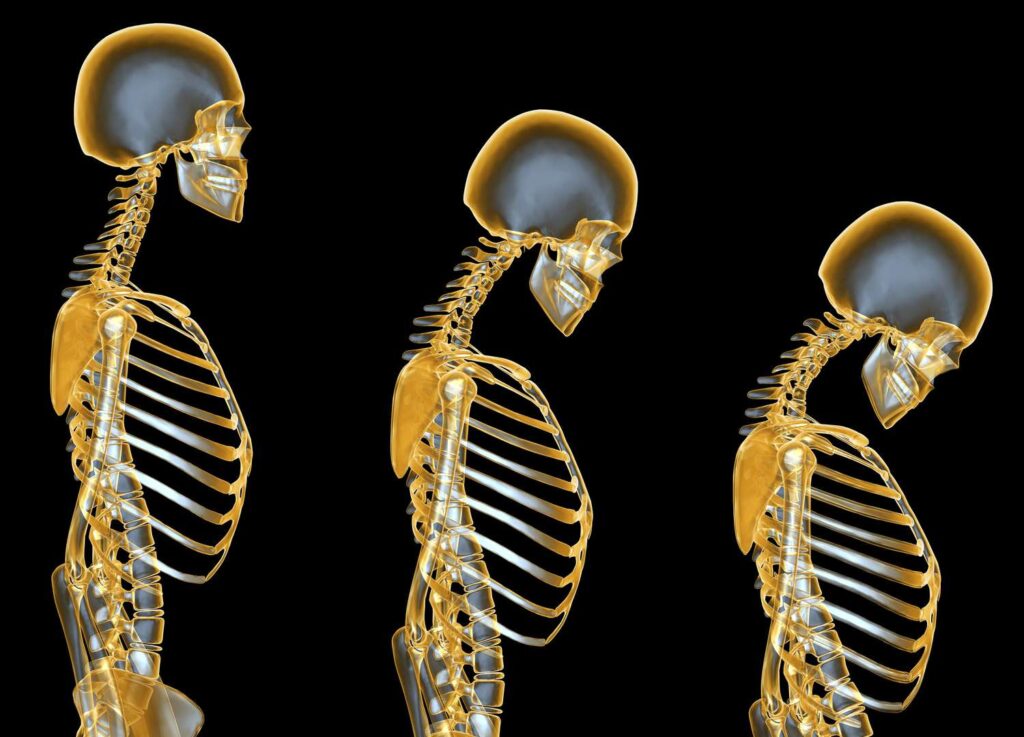Remodeling is a process in which bone, a living tissues, is consantly broken down and rebuilt. Approximately 10% of the normal bone is replaced through remodeling every year (the amount of bone removed is balanced by the amount of new bone laid down). As we age, the breaking down in the remodeling process occurs quicker than the new bone is formed, causing an imbalance. This leads to osteopenia the osteoporosis, and increased risk of fractures.
While lifestyle factors, such as smoking, excessive alcohol use, and not exercising, can affect the risk of developing osteoporosis, hormonal changes play a significant role as we age.
The main hormonal changes as we age include:
- An increase in Thyroid-stimulating hormone, cortisol and parathyroid hormone.
- A decrease in estrogen, testosterone and vitamin D.
The rise in Thyroid-stimulating hormone (TSH) levels has a protective role on bone mass. The decline of estrogen, testosterone, and vitamin D and the rise of cortisol and parathyroid hormone increase bone loss in the elderly.

How is osteoporosis treated?
- Exercise, particularly weight bearing and resistance exercise.
- Limit alcohol use.
- Stop smoking.
- Take Vitamin D and calcium supplements.
- Discuss hormone replacement therapy with your doctor (estrogen and testosterone).
- Discuss medications with your doctor (oral or injections).


